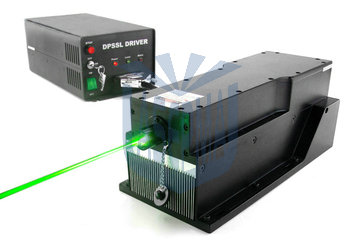

Fundamentals of Laser:
1. Brief History of Laser Development
At the beginning of the last century, a group of theoretical physicists represented by the great scientist Einstein established one of the important disciplines of modern physics, quantum theory. Laser LASER is the abbreviation for Light Amplification Stimulated Emission of Radiation, which means being amplified by a laser. Quantum theory predicts the possibility of stimulated radiation. More than forty years ago, American scientists first obtained laser output using ruby as a working medium in the laboratory. About two years later, Chinese scientists also developed the first ruby laser.
When laser first appeared, Chinese scholars translated it into laser based on the pronunciation of LASER in English, and the term laser is often used in places such as Taiwan and Hong Kong in China. Later, at the suggestion of scientist Qian Xueshen, it was changed to laser and extended to this day. After more than forty years of development, especially in the past decade, laser technology has developed rapidly. Nowadays, there are various types of lasers and their applications are diverse. Laser technology and its products have penetrated into many fields, including our daily lives.
2. Basic working principles of lasers
Quantum theory holds that all matter is composed of various microscopic "particles", such as molecules, atoms, protons, neutrons, electrons, etc. In the microscopic world, various particles have their inherent energy level structures. When a particle falls from a high energy level to a low energy level, according to the law of conservation of energy, it releases the energy of the difference between the two energy levels, usually in the form of light and heat. The working principle of an ordinary electric light cannon is that the filament absorbs electrical energy, and various particles in the filament are pushed to higher energy levels by electrical energy. Because the high energy level is unstable, it has a tendency to transition down the energy level. When particles at the high energy level transition to the low energy level, the filament emits light and generates heat.
The emission of a filament is random, and particles at various energy levels emit light of different wavelengths when transitioning downwards, without correlation. This is called spontaneous emission. Unlike lasers, scientists carefully design the structure of the laser to amplify the radiation of one energy level pair, while the radiation of other energy level pairs is not amplified or suppressed. In a laser, when a particle radiates downwards and emits photons, this photon induces and excites other particles to radiate the same photon, which is an avalanche replication process. Therefore, the light emitted by the laser has correlation, and this process is called stimulated radiation.
A laser usually consists of three main components: an excitation source, working material, and a resonant amplification cavity. The working substance absorbs the energy of the excitation source to raise its internal "particles" to the high-energy level. The role of the resonant cavity is to oscillate and amplify the radiation of a certain energy level pair, thereby achieving stimulated radiation and outputting laser.
3. Differences between lasers and ordinary light sources
The main differences between lasers and ordinary light sources are their monochromaticity, directionality, and high brightness. The so-called monochromaticity refers to the wavelength of a laser being a single wavelength. Usually, a laser only outputs light of one or several wavelengths, while ordinary light sources output light of various wavelengths; Fangxing refers to the concentration of laser radiation in a certain direction, while ordinary light sources emit light in all directions; High brightness refers to the concentration of laser energy in a small spot, while the light from a regular light source is divergent.
